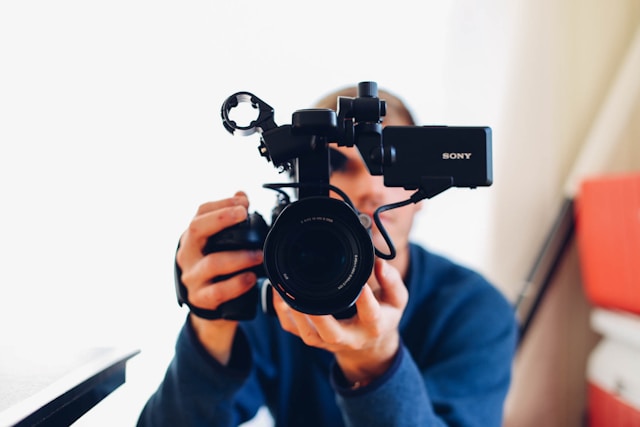Photo by Seth Doyle on Unsplash
What Do A-Roll and B-Roll Mean?
A-Roll and B-Roll are commonly used terms in video production and cinematography, referring to different types of footage.
| Roll | Description | Example |
|---|---|---|
| A-Roll | Primary footage, typically containing the core content and shots of important characters |
In a travel video, speaking directly to the camera about travel experiences or introducing attractions |
| B-Roll | Supplemental footage used to complement or replace A-Roll content, which can include background images, close-ups, or scene transitions. The use of B-Roll can enhance the layering and visual appeal of the video, and is sometimes used to mask flaws in A-Roll |
In a travel video, showcasing the natural scenery or cultural aspects of a location |
Why Different Types of Footage Are Called Roll
The English word Roll means “roll,” because in the past, filmmakers used film rolls to shoot.
They usually use two rolls of footage to shoot, A-Roll and B-Roll, with A and B representing importance.
A-Roll and B-Roll Scenario Examples
| Scenario | A-Roll | B-Roll |
|---|---|---|
| Film Industry | Narrative shots | Supplemental shots, providing background information and visual details |
| Advertising | Core product introduction, brand story | Product usage scenarios, close-up shots |
| Travel Vlog | Narrating travel experiences | Scenery, activities as supplemental shots |
| Education and Training | Direct teaching shots from the instructor | Displaying relevant materials, charts, or practical demonstrations |
| News Reporting | Shots of reporters on-site | On-location visuals, close-ups of interview subjects |
Techniques for Shooting B-Roll
| Method | Description | Goal |
|---|---|---|
| Motion Shots | Fixed shots on a tripod, slowly moving shots | Create a cinematic feel |
| Background Blur Effect | Using a large aperture lens for blurred backgrounds | Make the visuals appear more professional and upscale |
| Slow Motion | Altering the rhythm of the video | Provide viewers with a different visual experience |
| Multi-Angle Shooting | Combining wide shots with close-ups from various angles | Capture diverse perspectives within the same scene for a richer viewing experience |
| Focus Shifts | Changing focus points within the shot | Direct viewers' attention to new highlights within the same frame |
| Rich Camera Movement | Seamless transitions between handheld shots | Create smooth visual flow |
| Time-Lapse Shots | Using a spare camera for time-lapse while capturing other footage | Convey a sense of time passing and change |
| Relevance and Storytelling | Connecting visuals through similar shapes, colors, or elements. The narrative between visuals | Build story atmosphere and causal relationships |
| Rhythm with Music | Muting live sound and replacing it with atmospheric background music and distinct sound effects | Immerse viewers in the creator’s envisioned world |
| Timely Sound Effects Addition | Adding sounds like waves at the beach or birds in green trees | Enhance immersion in the visuals |
